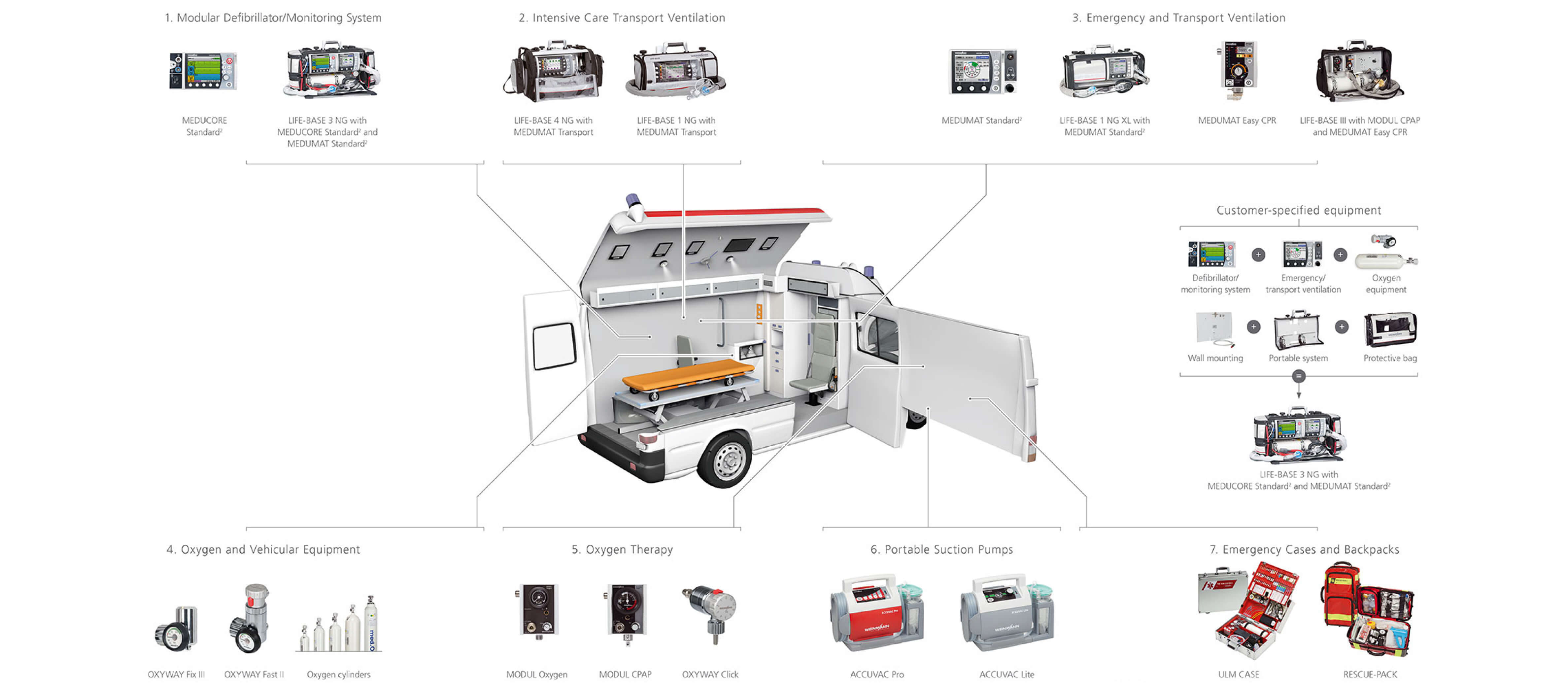
Essential Equipments in a Non-emergency Ambulance and Its Uses.
When you need to shift a patient to a hospital for treatment but not under any life-threatening situation, you call a non-emergency ambulance service. 80-85% of the medical transport services are for non-emergency purposes.
What is a non-emergency ambulance service?
The patient transportation service used for non-emergency purposes is non-emergency ambulance service. It is used mostly when
- The patient needs to be shifted to or from the hospital to his residence before or after treatment
- The patient has to be shifted from a general hospital to a surgical hospital or a speciality hospital
- Old people have to be transported to hospitals for treatment
- Bedridden patients need to go to the hospital for post-operative procedures like removal of sutures etc.
- Pregnant women in the process of labour have to be shifted to the hospital for delivery
- Infirm patients have to be taken to the hospital for their scheduled clinical appointments
- Patients with kidney problems need to go to the hospital for dialysis
- Cancer patients have to be shifted to hospitals for chemotherapy
- Patients with limb injuries or spine problems need physiotherapy
- There is a lack of free public transport to move patients to the hospital in rural or remote settings
All the above instances call for a patient transportation service in a non-emergency setting. Here the patient needs not only transportation but also basic clinical care with the help of medical caregivers and nurses. However, basic life support or critical care may not be essential in such non-emergency situations. So, the non-emergency ambulance service may not have all the equipment that an emergency ambulance has. Additionally, the non-emergency ambulance service needs pre-booking and advance intimation to schedule the pick and drop of the patients.
Essential Equipment in a non-emergency ambulance service
Here is an ambulance equipment checklist for a non-emergency ambulance service.
- Ambulance Bag or First Aid Box
An Ambulance Bag is a medical kit with basic first aid supplies and trauma kit. This is the first thing a paramedic reaches for in an emergency. To be on the safer side, all ambulances carry this first aid kit or ambulance bag, including the non-emergency ambulance service.
The ambulance bag contains bandages, medicines, syringes, drips, etc. The medicines include antiseptics, antibiotics, antipyretics, analgesics, sedatives, etc.
- Equipment for measuring vital Signs
A non-emergency ambulance service is fully equipped with all the devices needed for measuring a patient's vital signs. These include a clinical thermometer for recording the patient's temperature, a sphygmomanometer for measuring the blood pressure, a stethoscope for measuring the patient's pulse, etc.
- Pocket Mask with One-way Valve for CPR
A non-emergency ambulance service is ideally not meant for emergencies. But no one knows when an emergency might crop up. So, the non-emergency ambulance service is equipped with a pocket mask with a one-way valve for performing cardio-pulmonary resuscitation(CPR) in case the patient suffers a cardiac arrest or respiratory issue midway during transport.
- Portable Oxygen Cylinder
Transporting elders is a challenging task for ambulances. There are high chances of elders suffering from breathlessness or respiratory failure during transportation. This is why a portable oxygen cylinder is always present in a non-emergency ambulance service for handling any emergencies.
- Portable Suction Unit
For patients with respiratory illnesses or for elderly patients, having a portable suction unit is a must in a non-emergency ambulance service. This unit helps to suck up the mucus and fluid to free the respiratory pathways.
- Detachable Drip Stand
A detachable drip stand is provided in the non-emergency ambulance service to administer IV injections to the patient during transportation.
- Bedpan, Urinal, Kidney dish
Bedridden and physically-disabled patients need additional help during their transport. They may suffer from urinary or bowel incontinence or might even experience vomiting. Bedpans, urinals and kidney dishes are readily available in the non-emergency ambulance service to support such patients
- Bed or Stretcher equipment
This is the most important equipment in the non-emergency ambulance service. The patient needs to be shifted to the hospital and home. This requires the use of a wheelchair or stretcher. The ambulance must also have spinal support boards and collars for shifting patients with head or spinal injuries.
The above- mentioned items are part of a basic ambulance equipment checklist. The non-emergency ambulance service might have additional equipment like a pulse oximeter, nebulizer, or even incubator medical equipment if they are transporting neo-natal babies.
A non-emergency ambulance service is of equal importance as the emergency ambulance in transporting patients. Always engage a professional non-emergency ambulance service to transport patients in the safest manner.


